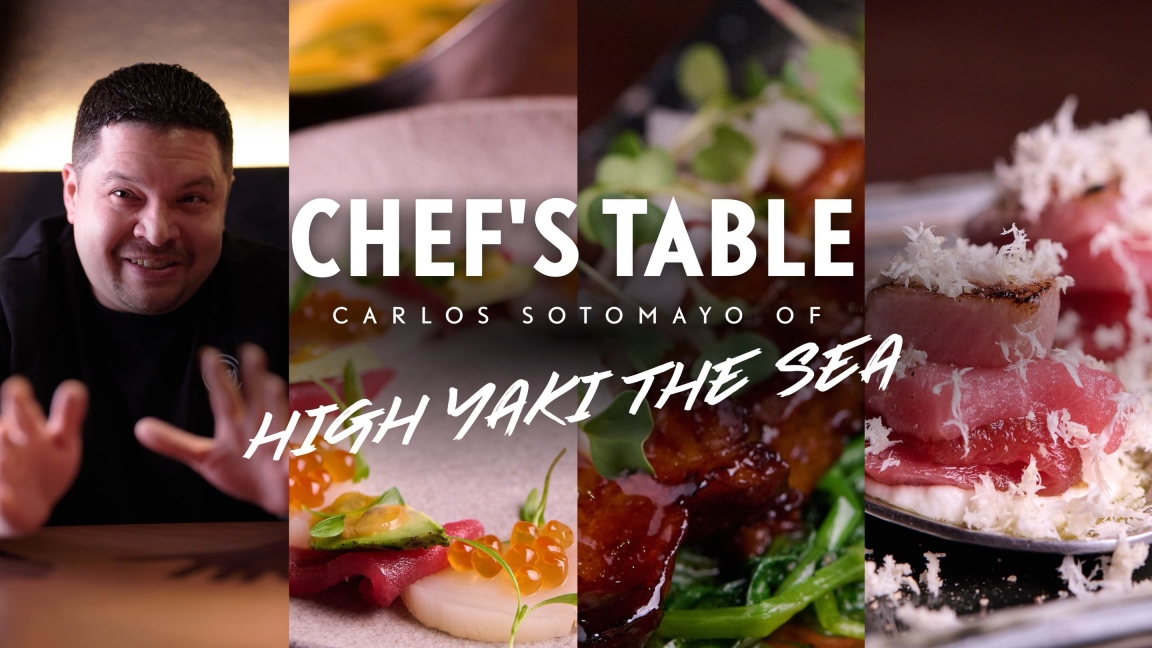
![[Chef's Table] Carlos Sotomayor of High Yaki The Sea](https://obj.shine.cn/files/2025/07/21/0cdc98c8-0e68-4d76-8447-5dafa05aa712_0.jpg)
Chef's Table isn't your average Q&A. We scrapped the tired interview routine and went for something a little tastier: dinner. Here we are, wining and dining with some of Shanghia's best chefs, no scripts, no fluff – just food, drink and whatever else comes up. It's raw, like a good sashimi, but polished up so you can enjoy it too. Got a chef we should dine with? Let us know in the comments.
Somewhere in a parallel dimension in the multiverse, Carlos Sotomayor is sitting in front of a computer screen somewhere in his home country of Peru, writing lines of code. Thankfully, we all lucked out. We ended up in the dimension where he ditches his computer science degree, goes to culinary school, ends up in Shanghai, and ultimately helms the kitchens of two very excellent Japanese restaurants. Today he explains why taste always trumps presentation and reminds us all that, no, Peru is not that long, skinny country on the western edge of South America.
![[Chef's Table] Carlos Sotomayor of High Yaki The Sea](https://obj.shine.cn/files/2025/07/28/3b708486-7e39-46a5-8850-6ba1f2b41514_0.jpg)
Carlos Sotomayor
CNS: So, Carlos, what got you into food?
Carlos: I was a picky eater when I was a kid. When I was around 12 or 13, my grandmother got cancer, and my parents sent my sister and me to live with our aunt during the summer holidays, so we could spend time with our grandmother. My aunt was not a good cook. I remember telling my grandma, "This daughter of yours doesn't know how to cook!" And she would make something for me instead. She would get me involved, giving me little tasks to keep me busy, like cracking the eggs. She started writing recipes down for me to try and cook myself. So I had a connection with cooking early on, and Latin culture is really big on home cooking. We just don't eat out a lot.
![[Chef's Table] Carlos Sotomayor of High Yaki The Sea](https://obj.shine.cn/files/2025/07/31/385d21ed-10ca-4f19-a653-a6e337dac3e8_0.jpg)
Baby Carlos (first left) with his grandma (center)
Eventually, I took a summer course in cooking for kids and they were teaching me the basics of Peruvian food and how to make some of the classic dishes. There was this show at the end of the course. Every kid needed to cook their favorite dish. I made a causa, which is basically mashed potatoes layered up with different things. I layered mine with tuna and shaped it like a fish.
CNS: How did it become your career?
Carlos: A few years after high school, I went to university to study computer programming. But I started having second thoughts before the first semester was even over. I just couldn't picture myself sitting in front of a computer for the rest of my life. But the school had a great hospitality management program with a lot of gastronomy and culinary courses. So, I switched my major. After graduation, I spent my free time working in various kitchens – busing tables in New York and doing internships at resorts in California.
Eventually, I found myself in Jackson Hole, Wyoming in the US. I was working in the kitchen at the Snake River Lodge. It was this beautiful four-diamond property. Super nice. A lot of rich people go there. After one season, the chef there moved to another resort across the parking lot, Teton Mountain Lodge and took me with him, and I worked there for about six seasons.
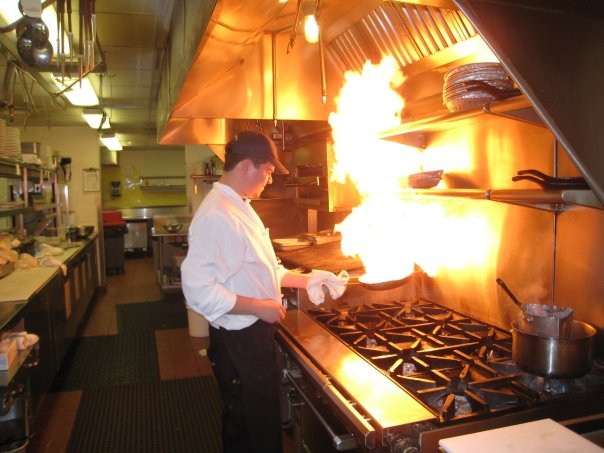
-

The early days in Wyoming
Carlos Sotomayor -
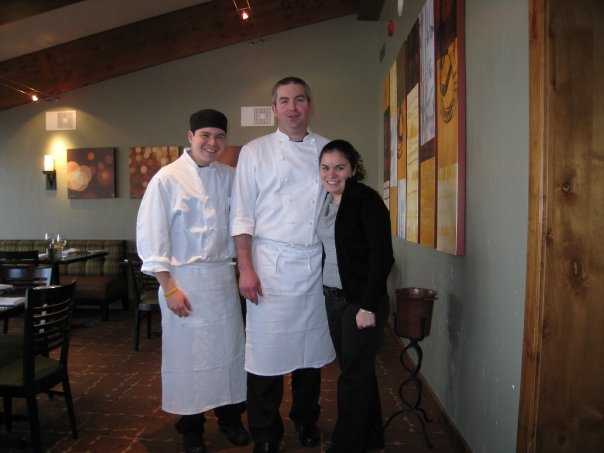
Carlos (left) at Jackson Hole
Carlos Sotomayor
CNS: What brought you to Shanghai?
Carlos: Willy Trullas Moreno found me through a headhunter. This was back in 2014. So, he was expanding aggressively back then. He had el Willy, el Coctel, Tomatito and that hot dog place called Bikini. He needed a sous chef for el Efante on Donghu Road. So, I started out working under Will Colmenares. He moved to the Indigo Hotel, and I moved up to his position, and I was there until 2018.
![[Chef's Table] Carlos Sotomayor of High Yaki The Sea](https://obj.shine.cn/files/2025/07/28/99e54e6d-6ecf-43ed-ae62-5e0a38df5f8d_0.jpg)
A Spanish speaking power trio. From left to right: Willy Trullas Moreno (Tomatito here in Shanghai), Victor Arguinzoniz from Asador Etxebarri in Spain, and Carlos.
CNS: How was Willy as a boss?
Carlos: He's a fun guy to work around, and he has a great palette. He always gave me a lot of leeway in the dishes I created, and he would offer very nuanced criticism about how to improve it. I always appreciated that about him.
CNS: He always projected this happy and whimsical persona. Did he ever get angry?
Carlos: Oh! For sure!
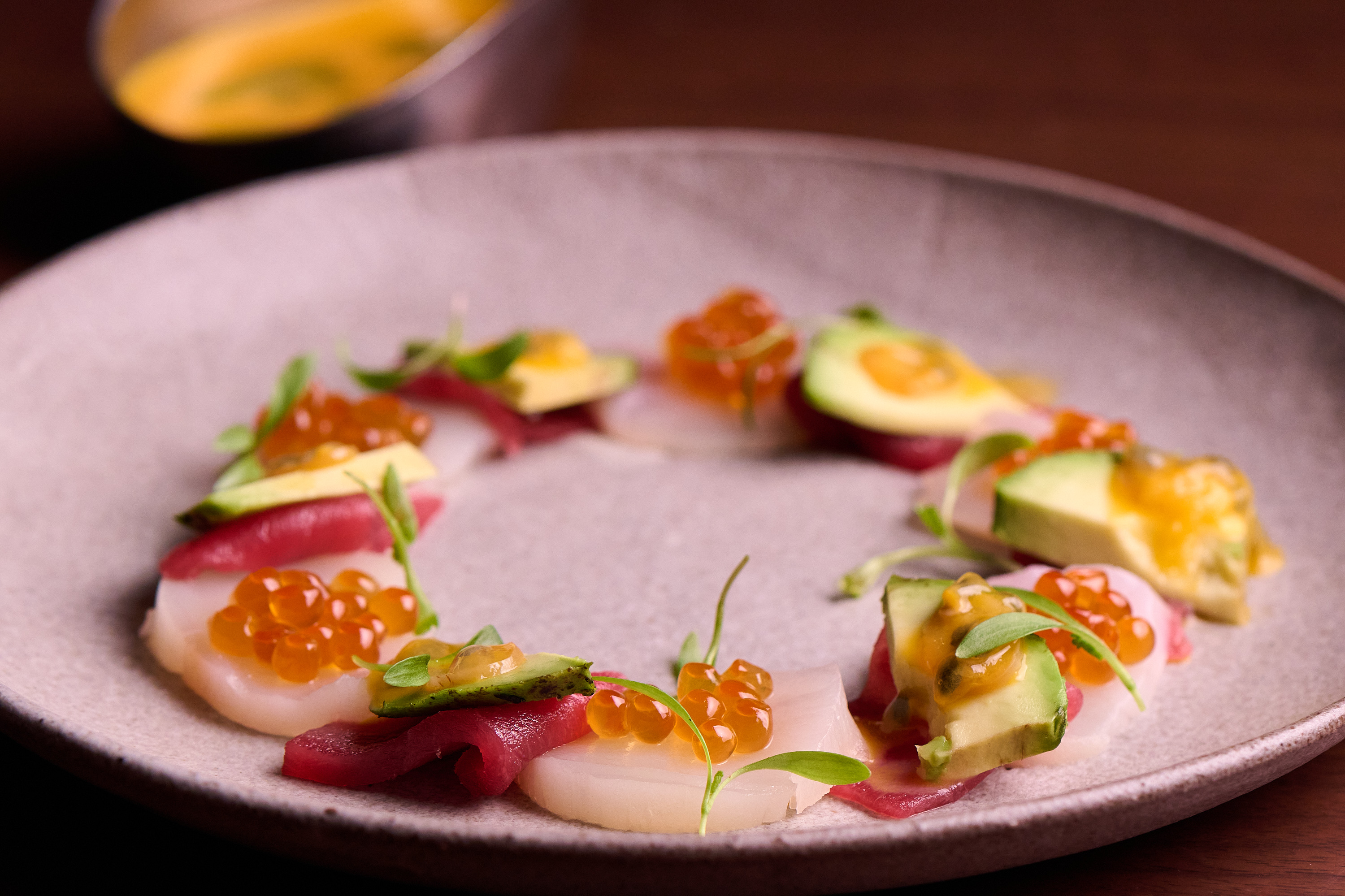
-

Our meal starts off with something light. The Tuna and Salmon Sashimi (98 yuan/US$13.7).
Brandon McGhee -

Next came the full blood wagyu beef from Uruguay. We won't spoil the plot with this one, but it's worth ordering (80 yuan per piece).
Brandon McGhee -
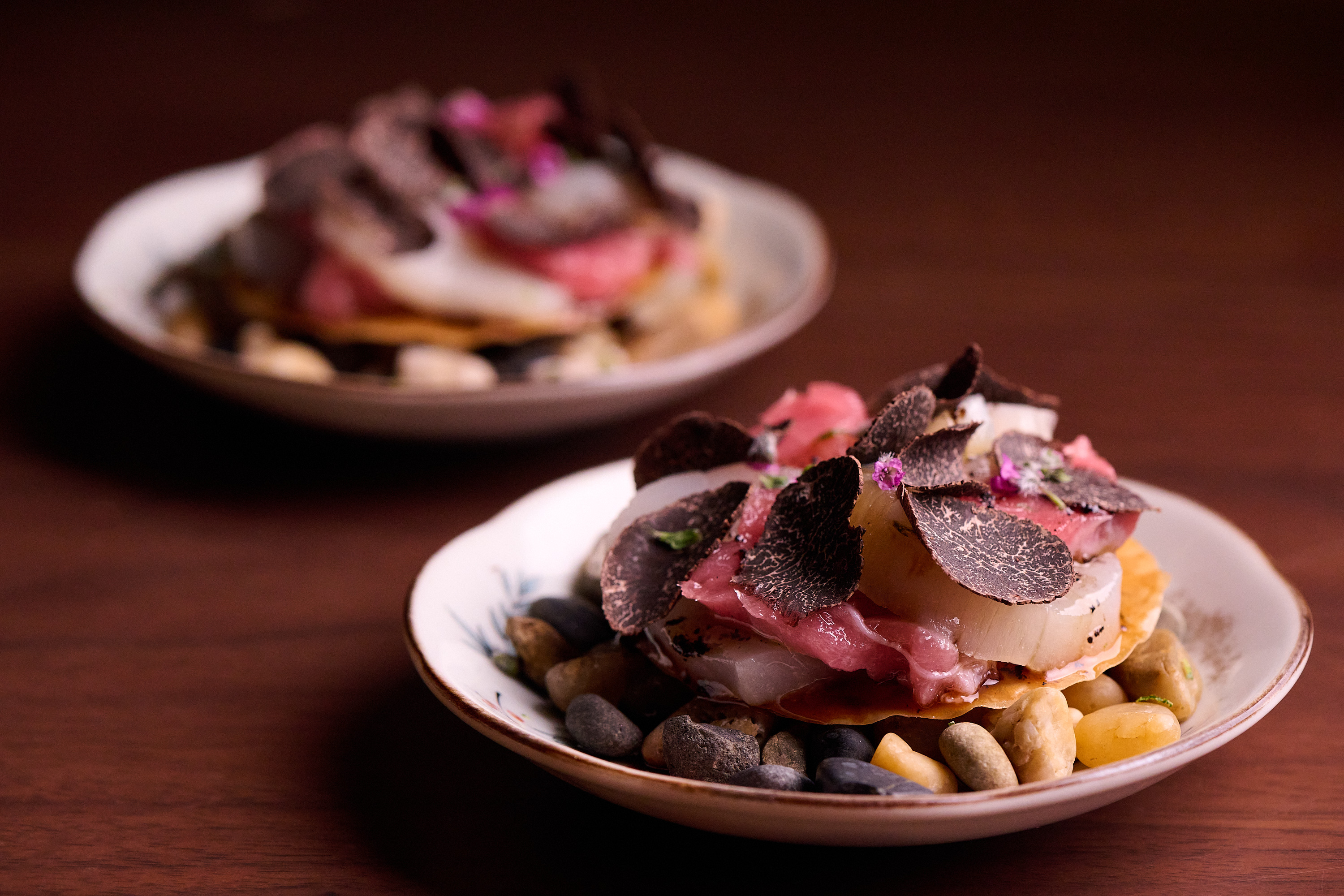
The "Biantai" Sushi comes next. This dish is comprised of scallop, chutoro, which is a medium fat cut of bluefin tuna, topped with a slice of truffle atop a paper thin cracker. 80 yuan per piece.
Brandon McGhee -
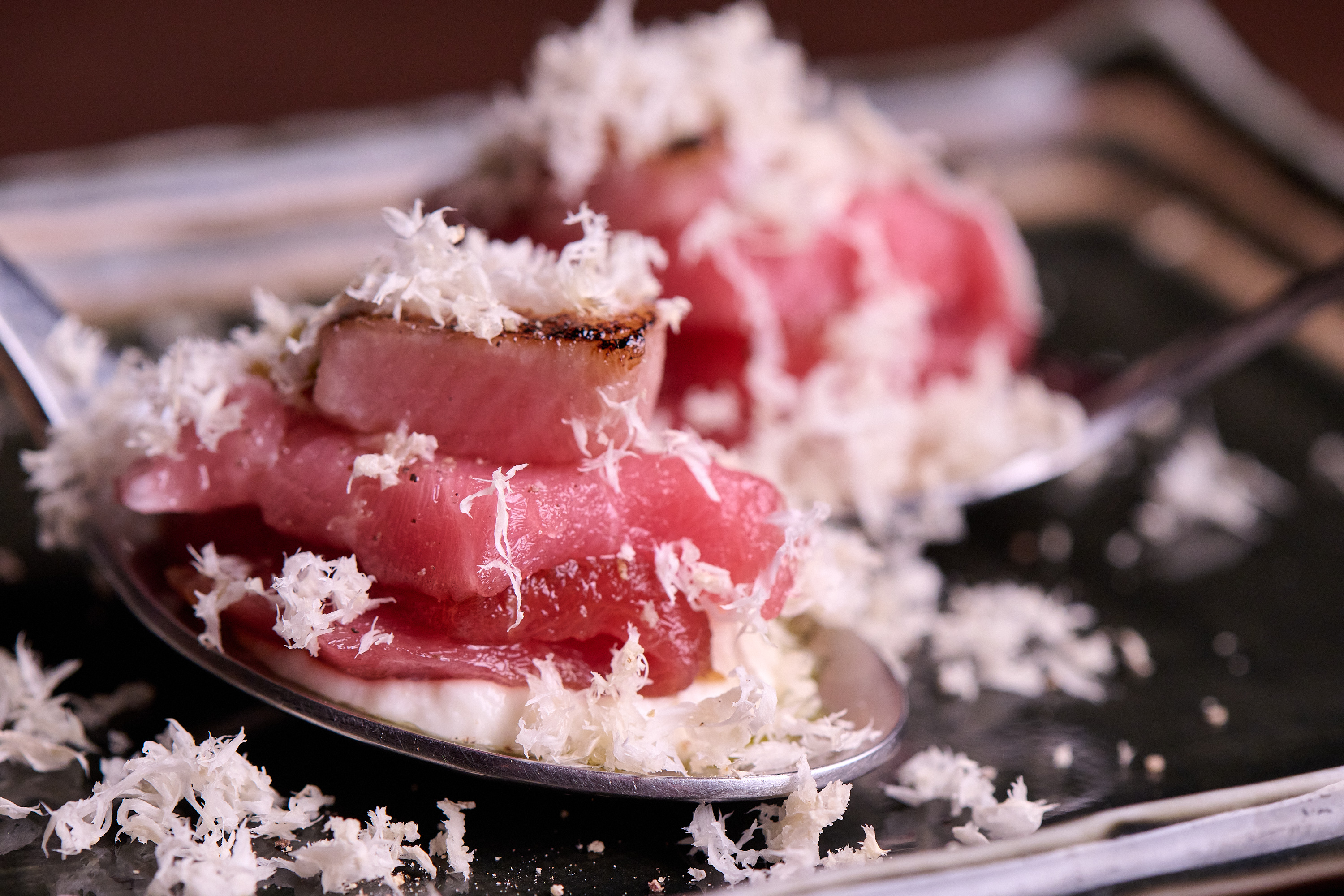
This dish presents tuna three ways: a trio of ōtoro (the fattiest part of the tuna belly), chūtoro (medium-fatty tuna) and akami (the lean, deep red meat from the back), accompanied by a horseradish cream and preserved yuzu (a fragrant Japanese citrus fruit). 85 yuan per piece.
Brandon McGhee -
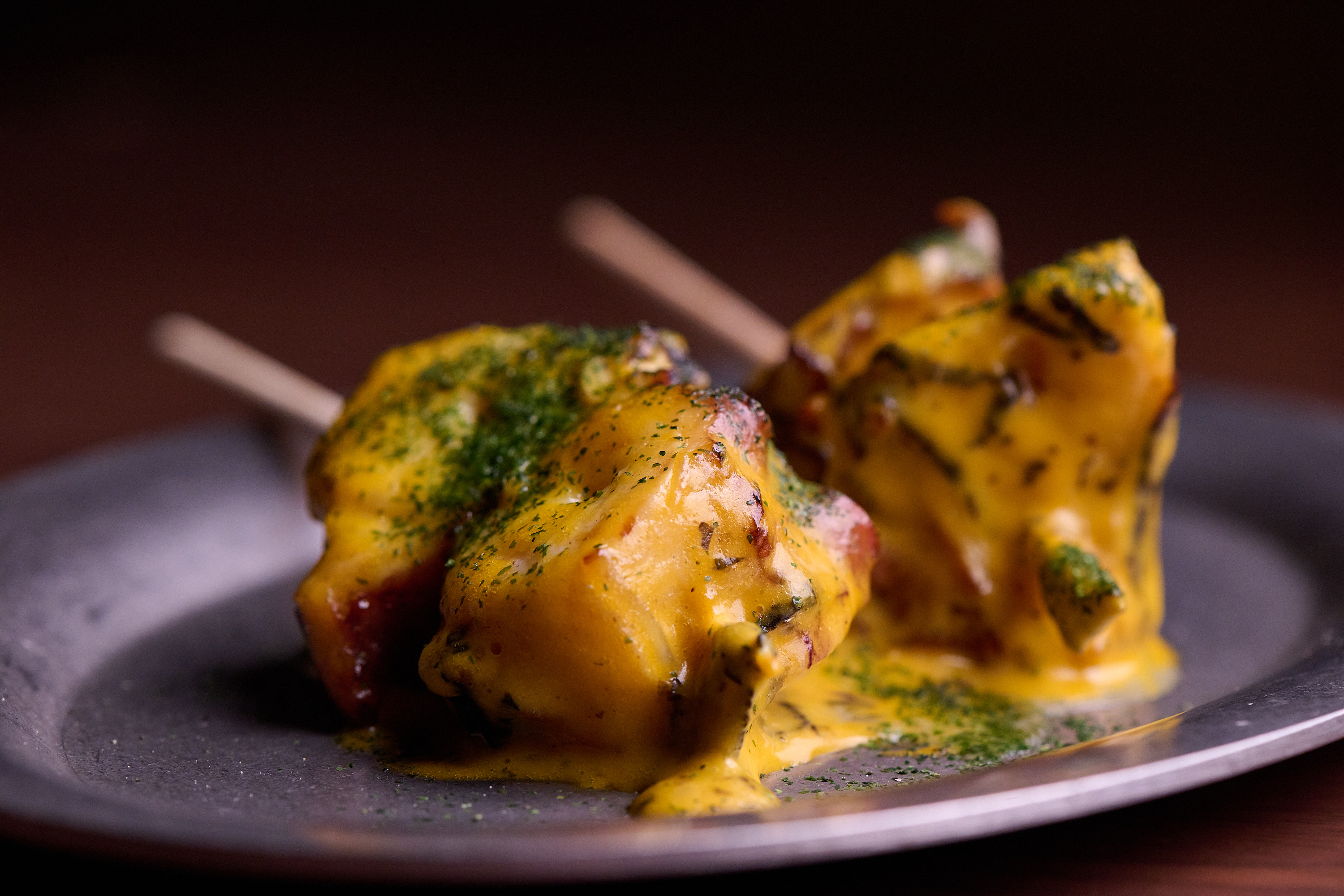
Octopus with a French sauce? Bit of a curveball in a Japanese context, but they land well. The seaweed hollandaise is unexpectedly spot-on (38 yuan).
Brandon McGhee -
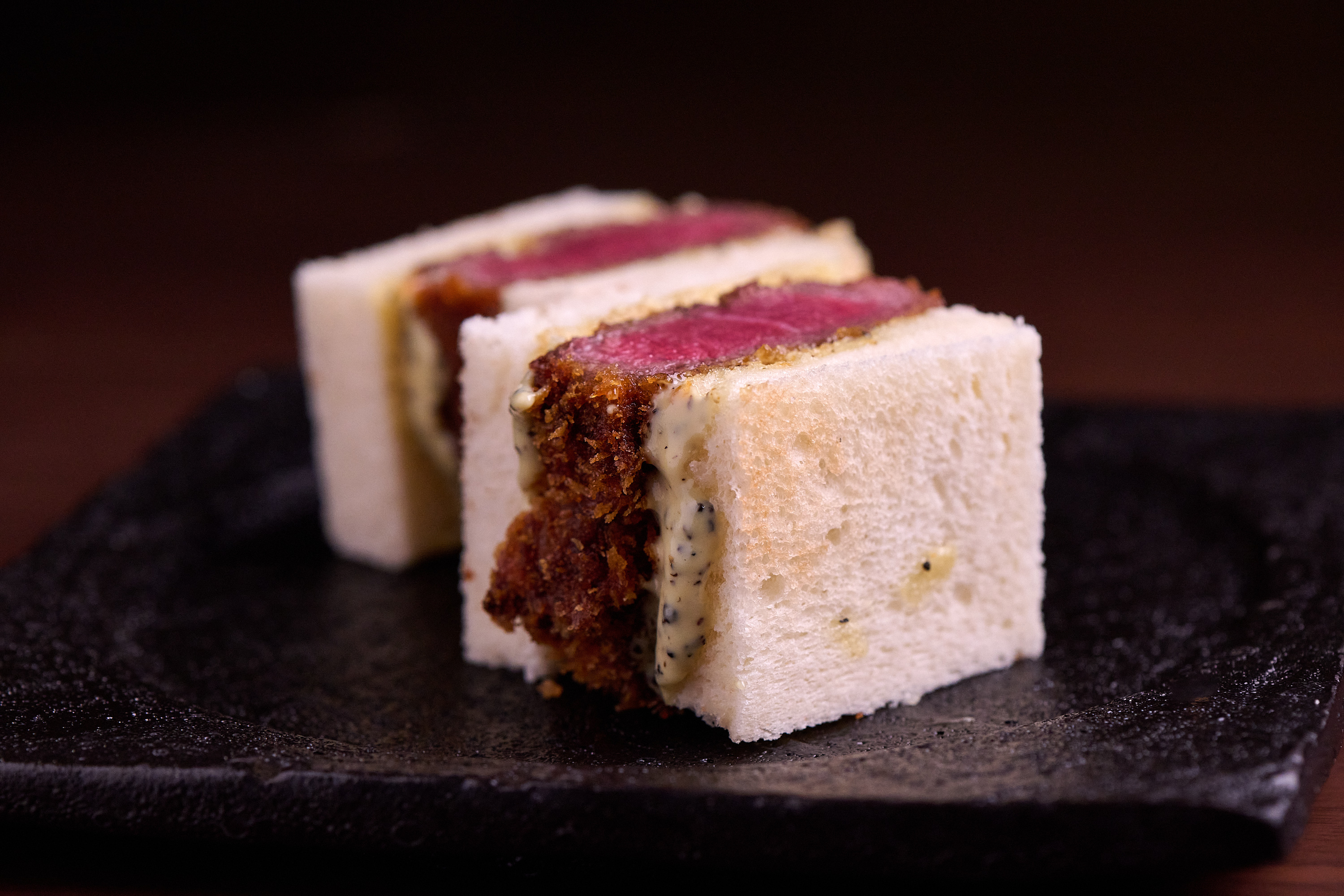
Small tapas dishes are doing us well so far. We're not worried yet as these lovely WAGYU sando pieces come. Milk toast and truffled aioli (158 yuan).
Brandon McGhee -
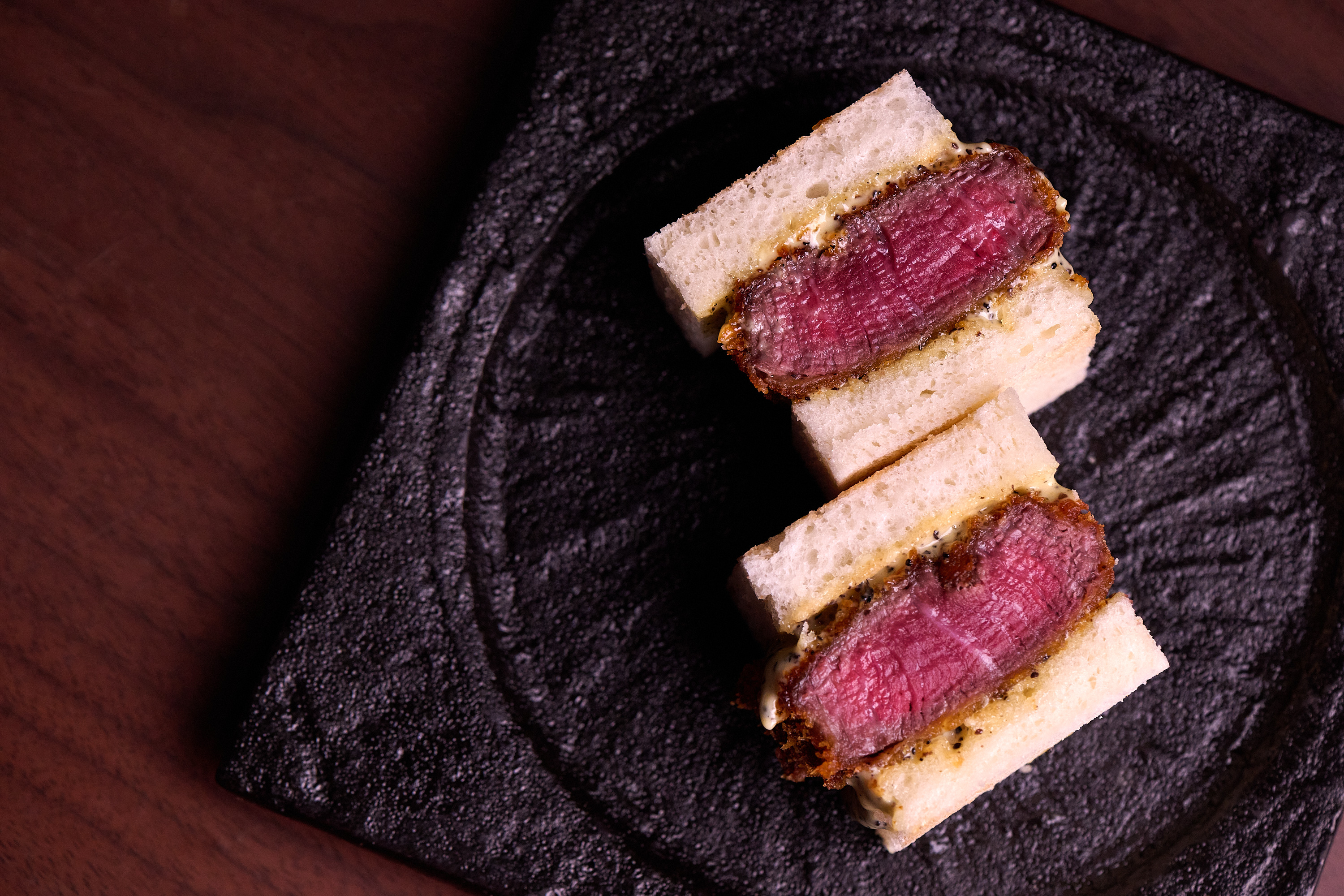
We had to take one more pic. Expert cooking on the outer fry and pink middle.
Brandon McGhee -
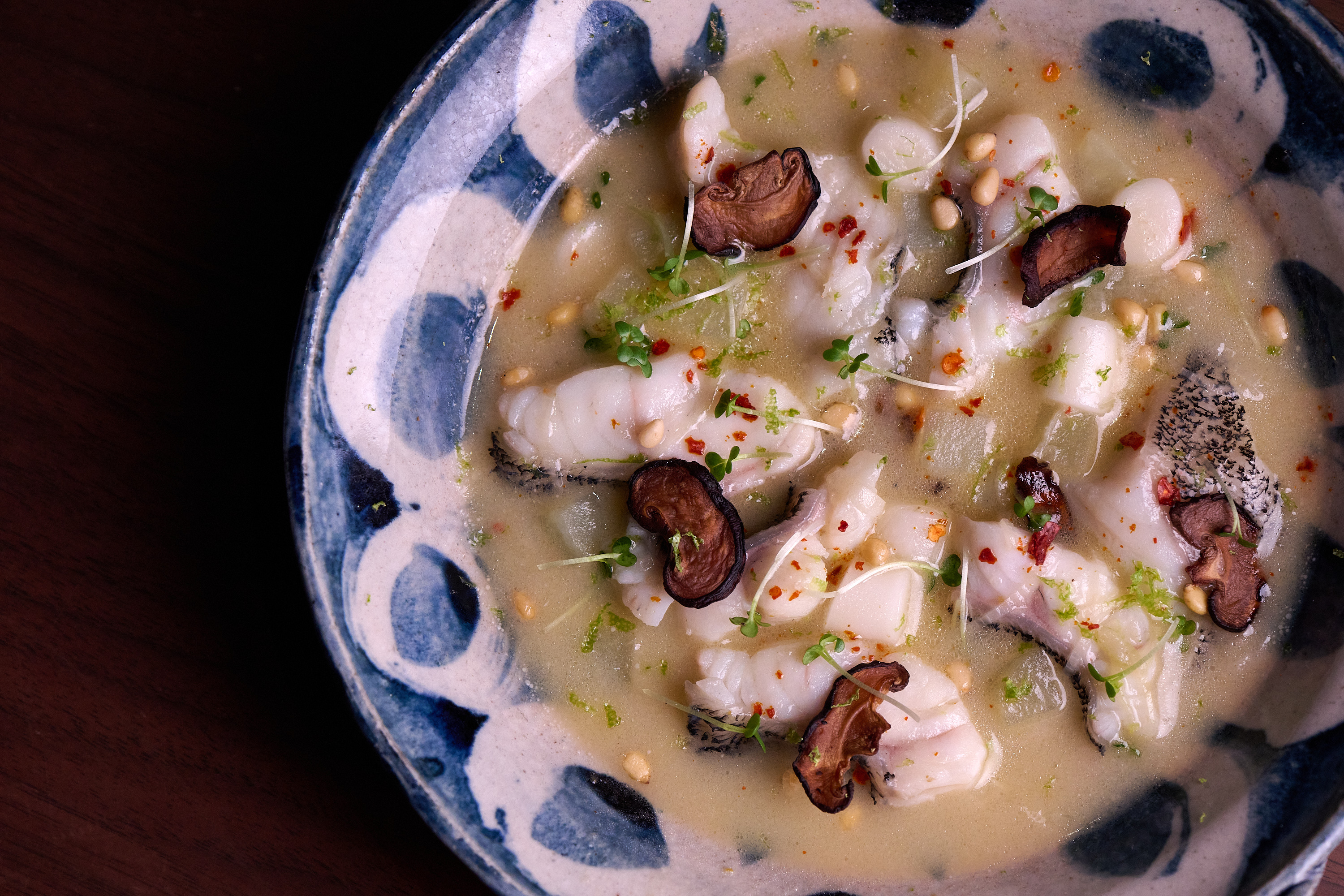
Next the Poached Grouper (168 yuan) arrives. A fish brone broth with leeks, rice cakes and root veg.
Brandon McGhee -
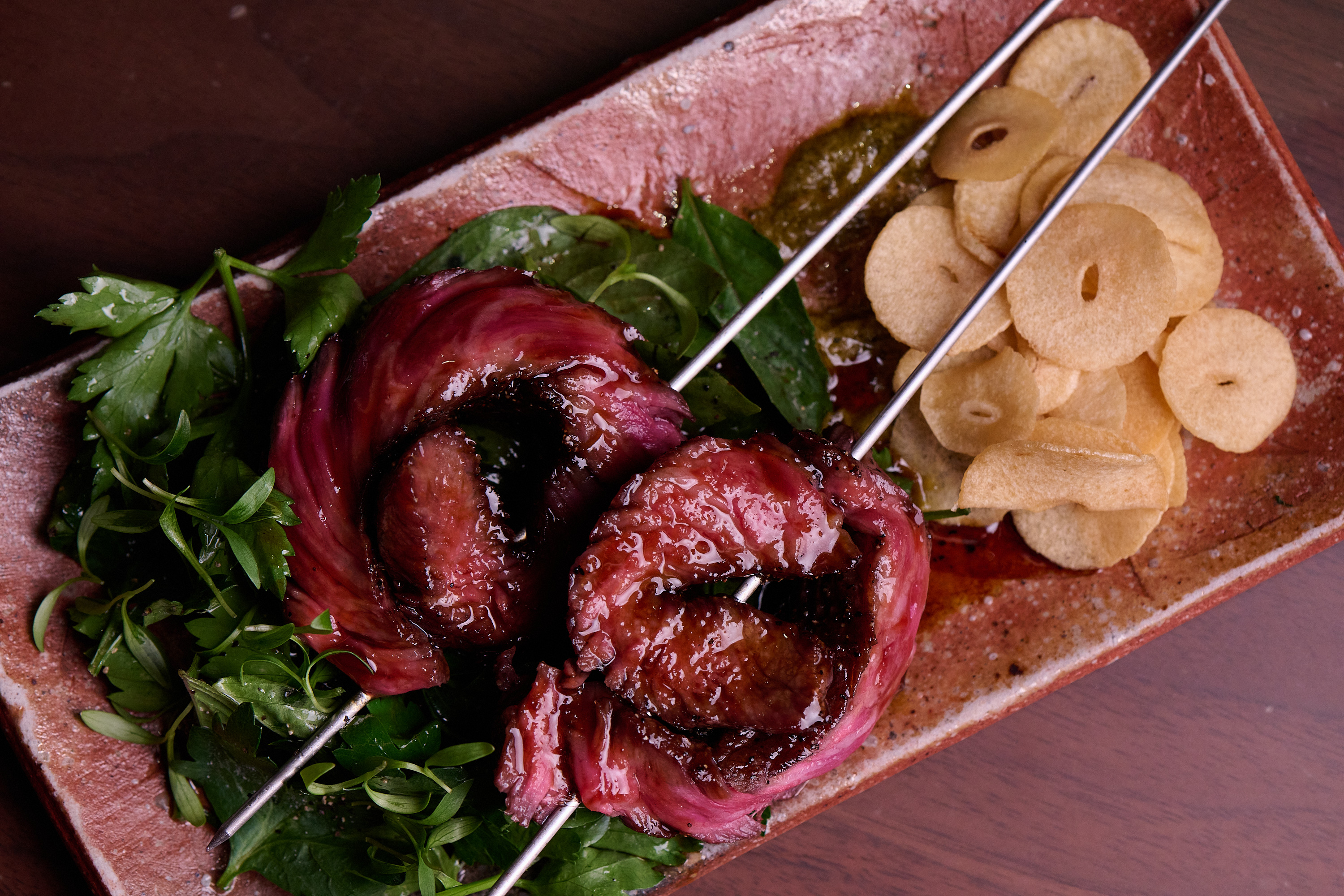
These full-blood Uruguay wagyu beef skewers are accompanied by fried garlic chips. 398 yuan. What can we say, it's a nice cut of meat.
Brandon McGhee -
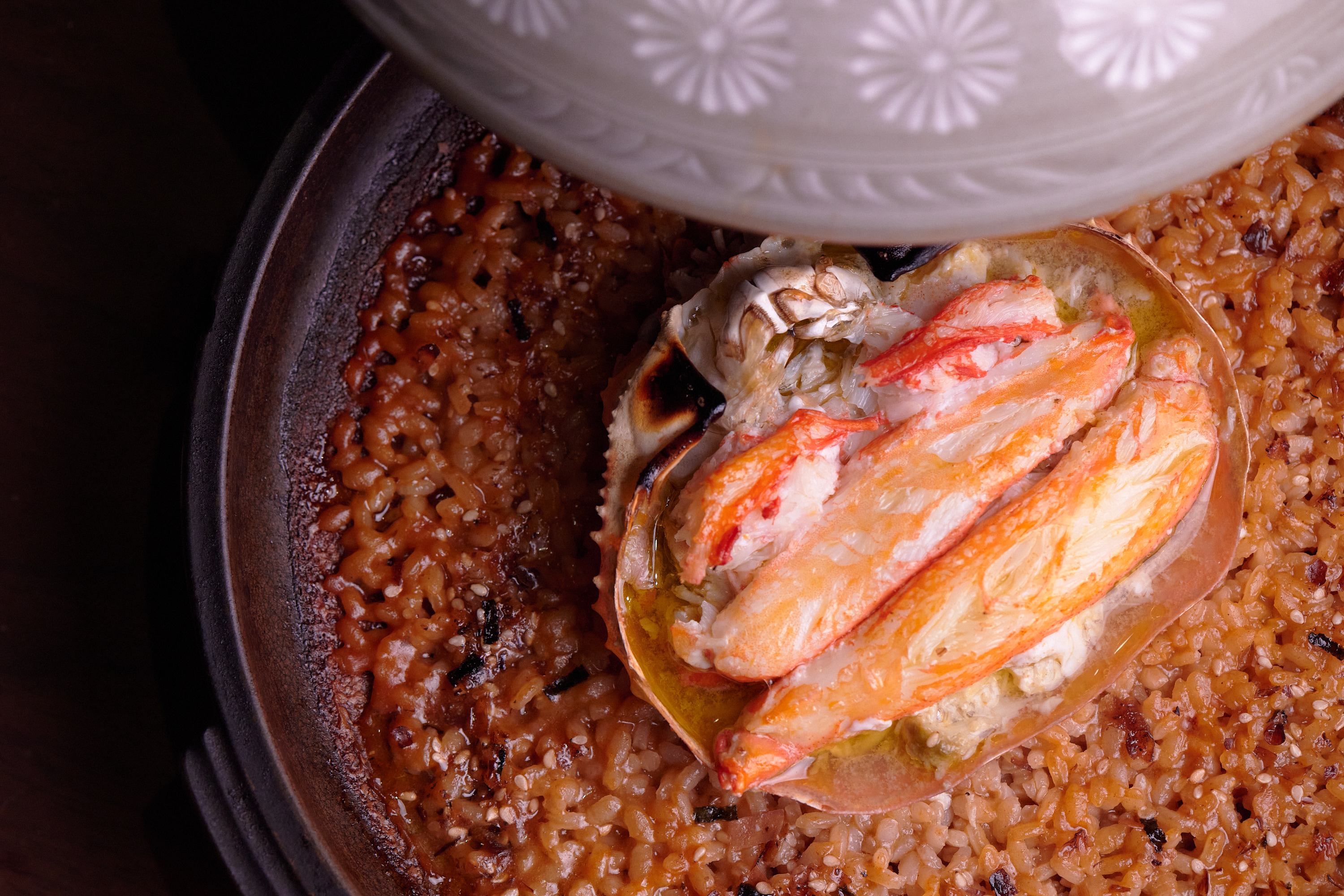
One of Hai Yaki's signatures, the Snow Crabhead Stone Pot Rice (558 yuan).
Brandon McGhee
CNS: What was angry Willy like? Did he throw knives and sizzling hot pans at you?
Carlos: He would get normal chef angry if something didn't meet his standards, and that's totally reasonable. A big part of my job was absorbing that pain, so my team didn't feel affected by it and they could get on with their jobs. If something came out that he didn't like, it was my job to make sure it got fixed. And as long as the problem got solved, we were fine.
CNS: What is the most important thing you learned working for Willy?
Carlos: If you want to be where you want to be, you need to work hard for it. He gave me the platform to be creative but also think about the flavor. Willy had a really deep understanding of flavor and how to balance it. And presentation is important, but it isn't as important as taste.
And that's a problem that I see with a lot of younger chefs. I remember having a cook here when we first opened. He used to work at Robuchon. He had so much discipline – a great work ethic. And he always cut everything perfectly. And but later, he started grabbing ingredients here and there and putting them together on a plate trying to make a beautiful dish. And I'm like, "So, what's this?"
"Oh, doesn't it look great?"
"Yeah. Taste it. What does it taste like?"
"I don't know."
He wasn't even tasting what he cooked.
It's the same with a lot of younger diners. Like, when we first opened High Yaki, we would get these girls sitting at the bar ordering a bunch of food. They'd take pictures of themselves and then of themselves with the food. By the time they'd finally eat it, it was cold. At least they'd still give a good review because they looked good in the pictures.
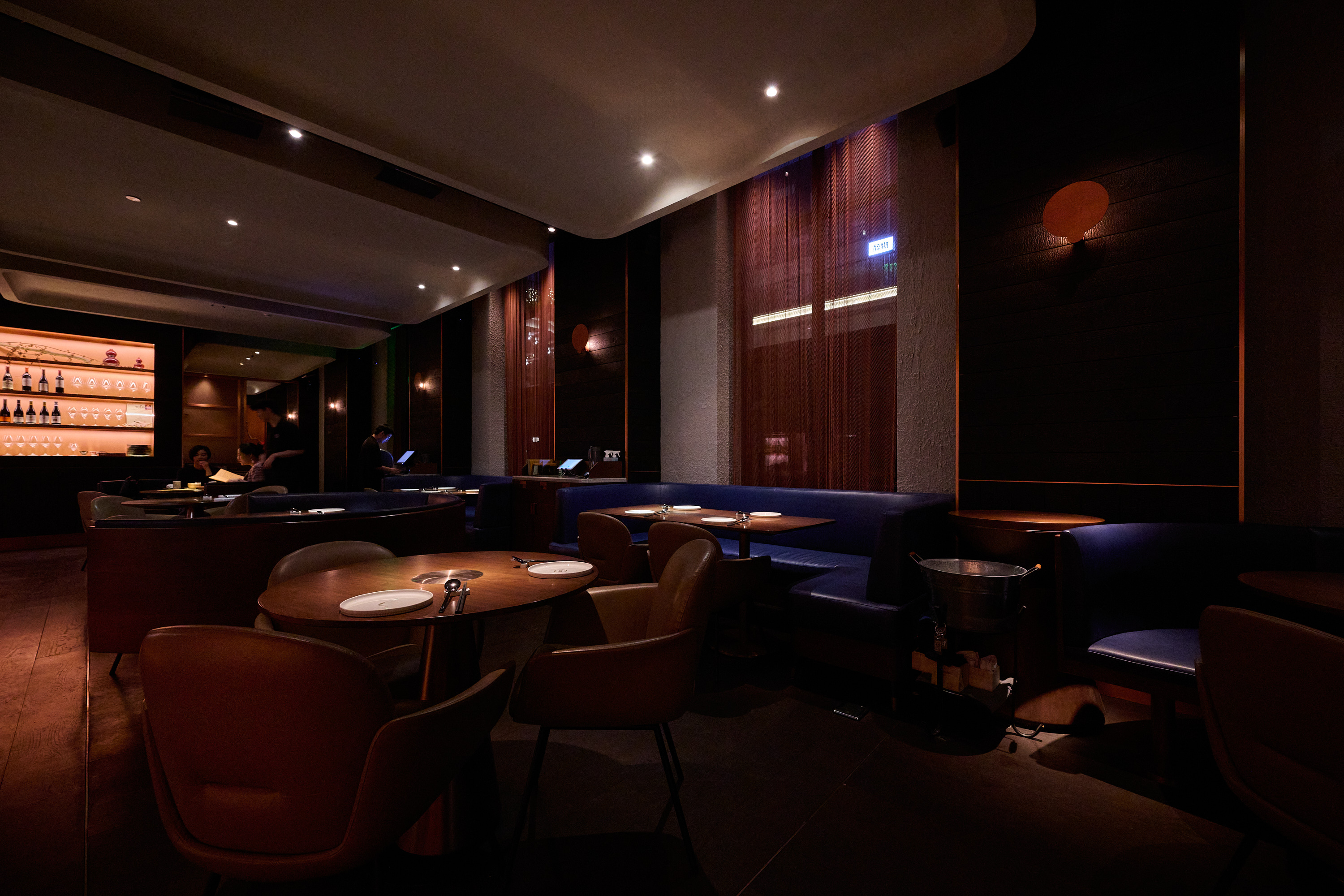
-

High Yaki the Sea
Brandon McGhee -
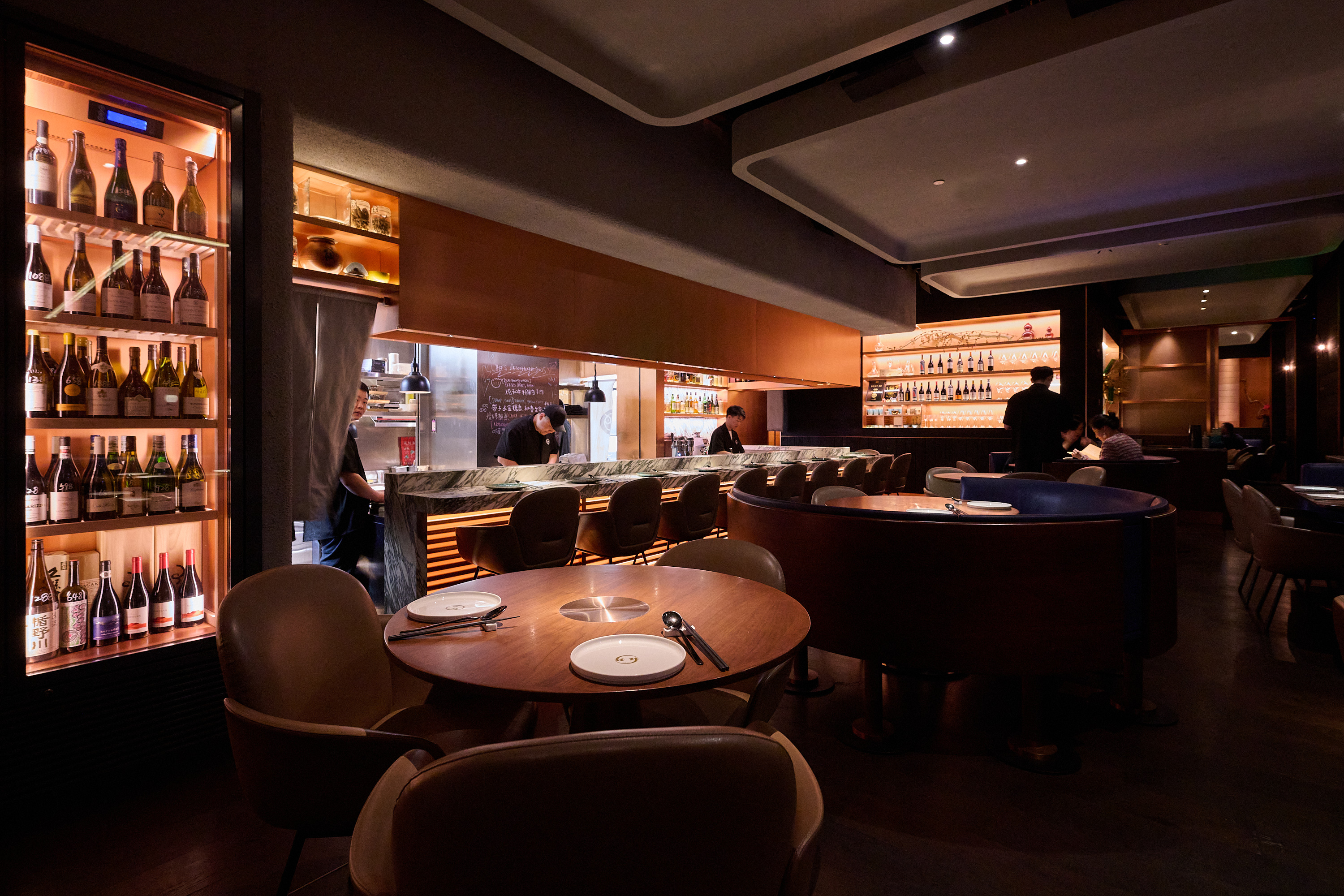 Brandon McGhee
Brandon McGhee -
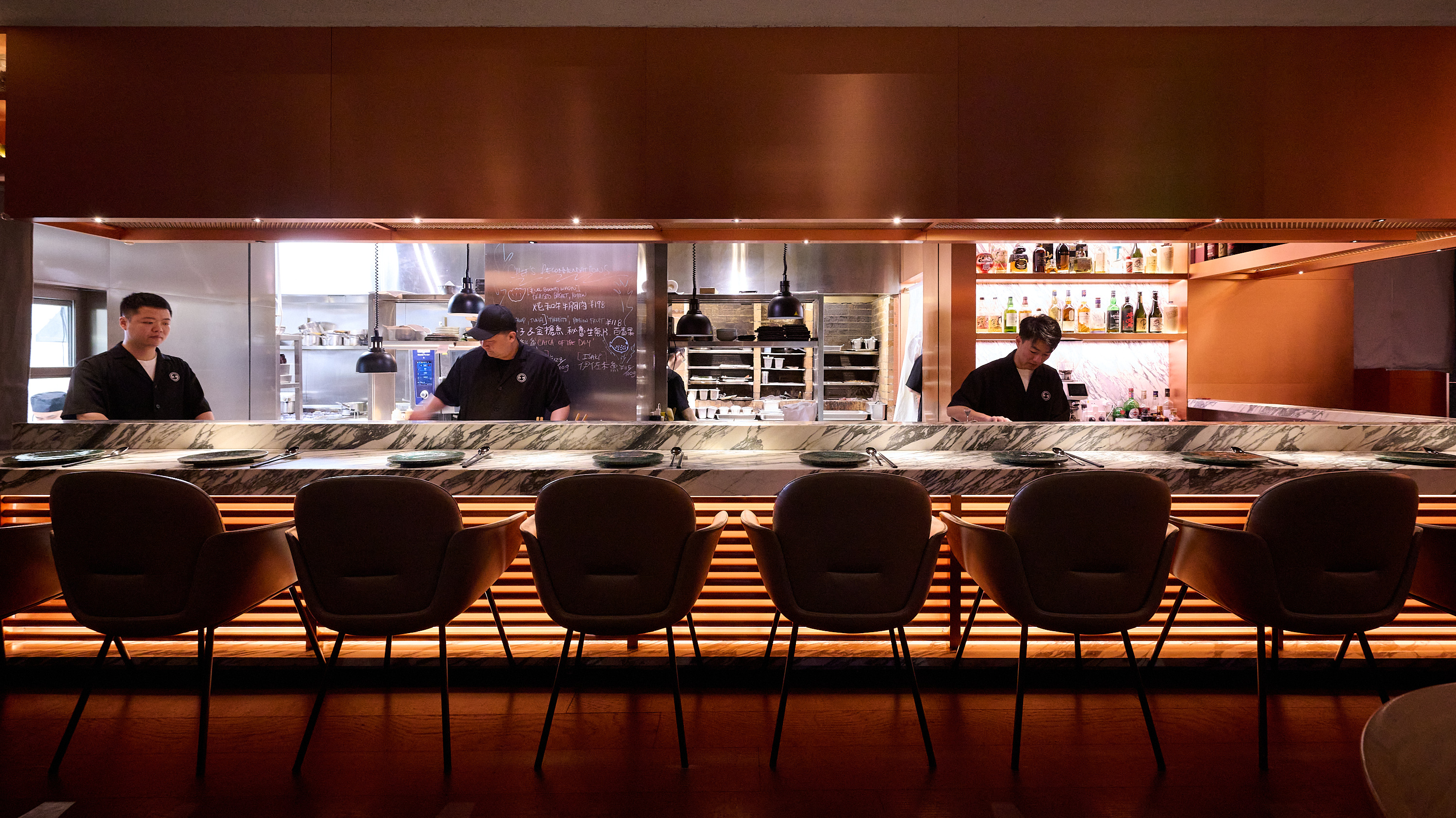 Brandon McGhee
Brandon McGhee
CNS: Good reviews from photogenic customers. Nice! So where did you go after working for Willy?
Carlos: When they closed el Efante, Hirano-san, Willy's partner brought me on for a new project. That's when I did Ekekko. But that was way too ambitious. The place seated nearly 130 people – and it was an omakase menu. Three months later we shut it down. It just didn't make any sense. It was just too niche. People would be like, "Peru is that long country in South America, right?" No. It's not that long country. You can't get people to commit to a multi-course menu of a cuisine they've barely heard of. But, you know, lessons learned.
![[Chef's Table] Carlos Sotomayor of High Yaki The Sea](https://obj.shine.cn/files/2025/07/28/ac8569b4-3a17-4323-b3c0-7f262bac8b37_0.jpg)
Carlos with his parents at Ekkeko
After Ekkeko closed, I started doing some consulting work, helping restaurants in places like Shenzhen and Chengdu open. And then I was locked out of China for a while because of COVID. I didn't expect to come back here. In fact, I thought I had another job lined up as an executive sous chef at the Intercontinental in Geneva. But they told me to wait.
Then I hear from Justin (Xu, owner of High Yaki). He had just opened Hundo and was spending all of his time there. He told me he needed someone to look after High Yaki. So I came back to work at High Yaki until the Intercontinental was ready for me. Again, the Intercontinental had to postpone. So Justin asked me to just stay on here full time. So, I did.
By 2021, there were plans to start another concept, a bistro. Our initial kick-off meeting was in March 2022. So, I think you probably know what happened next. Our general contractor goes into lockdown. He gets out. Our design firm goes into lockdown. They come out. Then Justin goes into lockdown. But we had already signed a contract for the space. By the time the dust settled, Justin decided he no longer wanted to do a bistro. Everybody else was opening those bistros – you know, the ones with walk-in wine closets where you can choose your bottle. Once an idea catches fire with everyone else, Justin doesn't want to follow the crowd. And that's how High Yaki the Sea came about. Then just as the the lockdowns were coming to an end, we received our first customers.
CNS: Was there much of a learning curve with Japanese food for you?
Carlos: It was a logical step for me. I was already familiar with a lot of the basics of Japanese cuisine. We have a lot of Japanese influence on our cuisine in Peru.
![[Chef's Table] Carlos Sotomayor of High Yaki The Sea](https://obj.shine.cn/files/2025/07/28/fd67b7a7-5c67-429e-8e6e-65209cfa32ba_0.jpg)
Yeah, we're having a good time. Carlos is a good host.
CNS: Where do you eat when you aren't working?
Carlos: I go to Pirata for Spanish. I've known Ling (Huang), the owner, for a lot of years. When I came to work for Willy, she had just left el Efante to open Pirata. It was a World Cup summer, so one of my first drinking nights out in Shanghai was at Pirata.
For sushi, I go to Ochiyo or Hulu. Those are my go-tos. For something more casual, Sushi Brothers is quite good, or Nai Sushi, that one on the fourth floor of iapm (mall) that you order from that little iPad. It's a nine-seat counter.
Then if I want izakaya, I go to Gubei. There's one called Shao Shao. It's in New Century Mall. On the third floor there is also this Osaka place where you can get very drunk. They have kushiage and stuff. For Japanese barbecue, if I'm craving it, I go to this place on Xianxia Road. There's a really good okonomiyaki place right next door, too.
For Chinese places, I like Man Man Tangbao on Jianguo Road near Gao'an Road. It's these old uncles who've been doing xiaolongbao (little steamed buns) for over 20 years there. They're open late.
For Beijing Duck, I like Sheng Yong Xing. That's a great place. Good value for money as well. And the quality is outstanding. I like the way they line up their wine list. It's like wine for 300, wine for 400, wine for 500. And they say, "This is for duck. This is for chicken. This is for beef."
![[Chef's Table] Carlos Sotomayor of High Yaki The Sea](https://obj.shine.cn/files/2025/07/28/addea348-0a30-4d18-8879-b9b898d28b40_0.jpg)
Wanna try out some of Carlos' soul? Head to Hai Yaki The Sea.
If you go...
Address: Unit 113, Bldg 5, 8 Hengshan Rd, near Wulumuqi Rd
衡山路8号5楼113单元,近乌鲁木齐路

